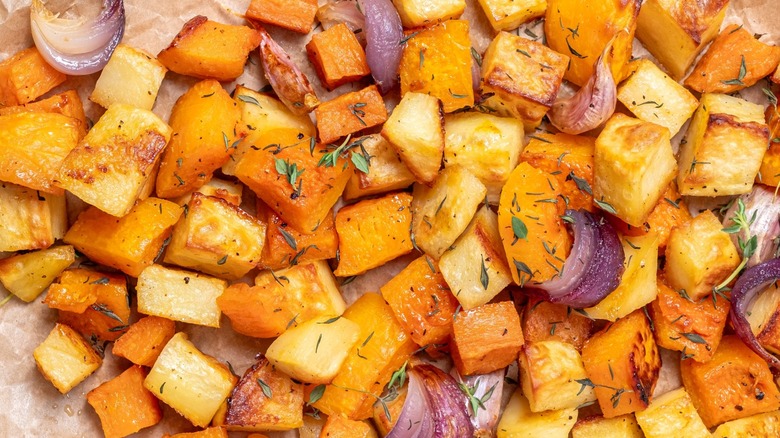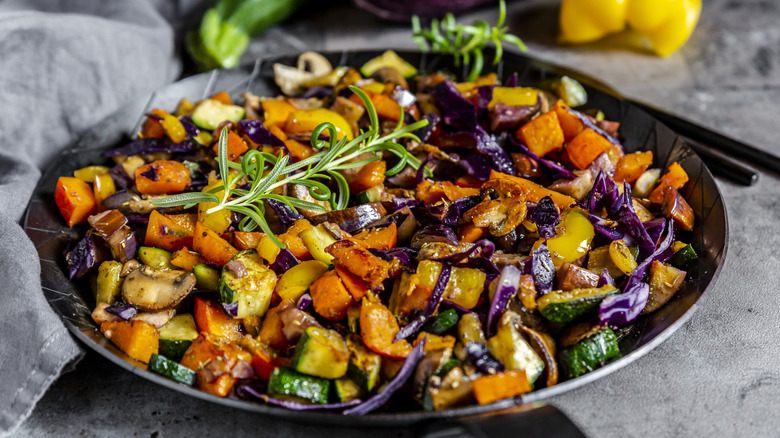What Is The Ideal Temperature For Roasting Vegetables?
Few things are more effortlessly delicious than well-roasted vegetables. Crackly florets of cauliflower, perfectly charred Brussels sprouts, and crispy sweet potatoes far outweigh their lifeless boiled counterparts in terms of taste and texture. Roasting is also a ridiculously low-lift method: Preheat your oven, slide vegetables in, and let the heat do all the magic.
But what cooking temperature will allow you to achieve a sear without burning everything to an unrecognizable point of no return? When it comes to roasting the vast majority of vegetables, opting for 400 degrees Fahrenheit is a no-fail method. This level of heat is high enough to easily carry out the Maillard reaction — a chemical phenomenon that browns sugars and proteins, leading to admirably crispy food.
Something about the 400 degrees Fahrenheit realm is magically versatile: It works for nearly everything. You can use it to roast a tray of delicate cherry tomatoes, but the temperature also works well on browning root veggies ranging from honey-glazed roasted carrots to turnips.
Cooking time matters
While 400 degrees Fahrenheit is an ideal temperature for roasting veggies, it's also critical to keep an eye on a recipe's cooking time. A tray of garlic and tomatoes can achieve a deep roast in about a half-hour at that temperature, while root vegetables, like beets and sweet potatoes, are denser and contain less water, so may take more time to cook through properly. Our recipe for herb-roasted root vegetables suggests 30-40 minutes in the oven. And roasting a sheet of lemony, oregano-dusted potatoes at 400 degrees Fahrenheit can take closer to an hour; simple roasted asparagus, on the other hand, can cook through by spending a mere 20 minutes in the oven at the same heat level.
While the durations may vary, cooking is about personal preference at the end of the day. Are you the type of person who loves the burnt ends of French fries, despite the fact that your friends find that weird? You might want to leave your vegetables in the oven slightly longer, checking periodically for your ideal level of crunch.
Before roasting your vegetables, be sure to add salt and some sort of fat, like olive oil, to your tray. Salt will emphasize the veggie's flavor and sweetness, and fat helps encourage the browning process and keep things from drying out. Once you master the art of perfectly crisped vegetables, nobody will ever, ahem, roast your cooking skills again.

